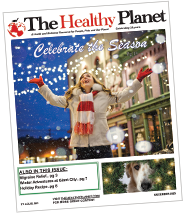By Mitch Leachman
Executive Director
St. Louis Aububon Society
Most people think only of birdfeeders when it comes to helping support our backyard birds. While feeders do provide supplemental food nutrition for a variety of common bird species, water and shelter can be even more valuable to the birds. Further, native plants are an exciting and sustainable way to more fully support their life cycle, especially breeding.
Bird feeding is easy and need not be expensive. A variety of mixes are available at specialty bird stores, pet stores, hardware/nursery and even grocery stores. However, quality feeders are best left to the experts at the bird stores, especially since most are guaranteed and readily repaired/replaced if damaged. Folks there can also explain the details of seed type by feeder and type of bird. Feeders should be located where you can easily see and enjoy them and mostly in the open. Avoid placing adjacent to shrubs or other dense plantings where predators can hide, and if you have a cat you allow outside on its own, please skip the bird feeding.
Water is often overlooked, but as essential to birds as it is to us humans. Bird baths can be procured at most of the places listed earlier for feed, but are not required. Most any wide and shallow container will work; I prefer the large plastic plant saucers the home improvement and hardware stores sell for about $10. They can be placed most anywhere, are easy to clean and hold up year-round. I even leave one out in winter with an electric heater—yup, birds need water in winter, too.
Like feeders and water, bird houses should be installed where readily visible to you, while respecting the needs and safety of the birds. Breeding season is still months away, but cold weather roosts are sought after all winter. Small birds often use bird houses as shelter. For most suburban yards, a wren box is best with an entrance hole no larger than 1 1/8 inches in diameter. Bluebirds are amazing, but their needs are too particular for most St. Louis neighborhoods.
Finally, native plants provide essential bird food directly with fruit and seeds and support a variety of plant-eating insects which are in turn eaten by birds. In fact, all of Missouri’s songbirds need insects to provide protein to their babies. For additional details, see “Landscaping for Life” in the May 2014 Healthy Planet.
Birds are a colorful and musical part of our natural world. With some planning and very little investment, you can help sustain them while enjoying each and every winged miracle!
Resources:
Bird Feeding Basics: http://web4.audubon.org/bird/at_home/bird_feeding/index.html
Nest Boxes: http://www.allaboutbirds.org/page.aspx?pid=1139
Native Plants for Birds: http://stlouisaudubon.org/conservation/BCH/index.php


